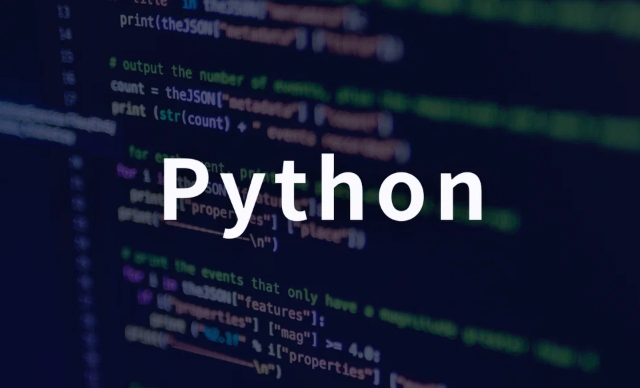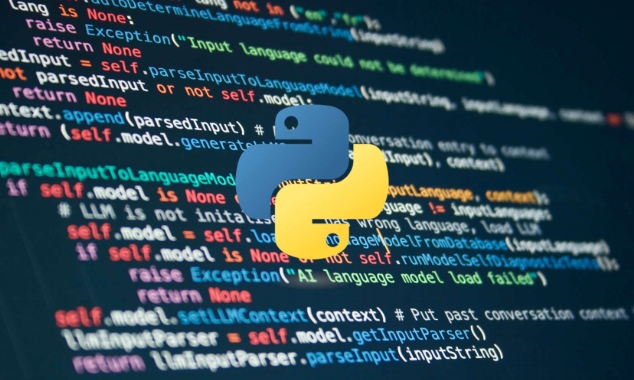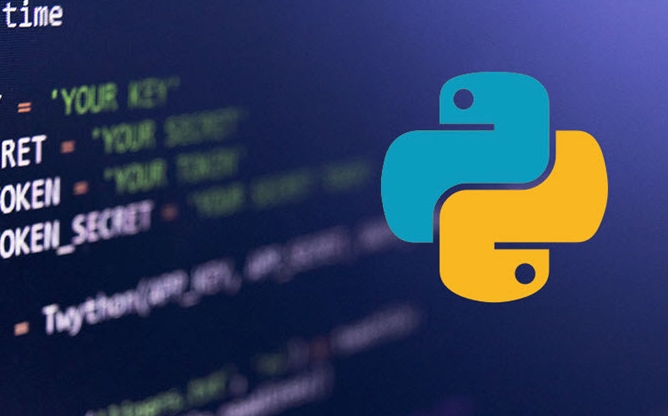The method of loading JSON data from URLs in Python is as follows: 1. Use the requests library to initiate a GET request and parse the response; 2. The optional json module cooperates with urllib processing. The specific steps are: first download the data through requests.get(), and use response.json() to convert the format, and check the status code to ensure the successful request; if you need to avoid third-party libraries, you can manually parse urllib.request with json.loads(). Frequently asked questions include JSON format errors, connection timeouts, encoding mismatches, etc., which can be solved by setting timeouts, adding headers, or debugging output. The entire process requires that the URL is valid and the server responds normally.

Loading JSON data from URLs in Python is actually quite straightforward, and it can be done in just a few steps. The key is to use the right method and pay attention to the two links of network request and data analysis.

Use requests to get remote JSON data
The first step is to download the data on the remote URL. The most common method is to use the requests library to initiate a GET request. It is simple and easy to use, and the code is clear.
import requests response = requests.get('https://example.com/data.json') data = response.json()
The above code will get the URL corresponding to the content and try to convert it into a Python dictionary or list structure. But be aware:

- Make sure that the URL is valid and returns the standard JSON format;
- If the network is not working or the server errors,
response.status_codemay not be 200, so it is best to make a judgment at this time; - Some websites have anti-theft links or require authentication, and may require headers or tokens.
A simple judgment can be added to ensure the request is successful:
if response.status_code == 200:
data = response.json()
else:
print("Request failed")Manual loading with json module (optional)
If you have obtained the response content in other ways, such as using urllib.request or other libraries, you can also handle it manually with json module.

import urllib.request
import json
with urllib.request.urlopen('https://example.com/data.json') as url:
data = json.loads(url.read().decode())This method does not rely on third-party libraries and is suitable for situations where you don't want to install additional packages. However, compared to requests, it is a little more troublesome to write, and you have to complete the errors yourself.
Deal with possible problems
You may encounter some pitfalls in actual operation, and common problems include:
- JSONDecodeError : It means that the returned JSON is not a legal JSON, it may be that the server reported an error or the address you accessed is incorrect;
- Connection timeout or access denied : Check network, URL, and server status;
- Coding issues : Some response content is not encoded with UTF-8, and it is necessary to use
.encodingto view or force specify the decoding method; - It is difficult to get value in nested structures : after getting the data, you must be familiar with the structure, you can use
print(data)orpprintto view it.
If you want to be more secure, you can add a timeout limit when requesting:
response = requests.get(url, timeout=10)
Basically that's it. As long as the URL is correct and the network is smooth, using requests is the fastest way. If it is not convenient to install a third-party library, you can also use built-in modules to complete the basic functions.
The above is the detailed content of Python JSON load from URL. For more information, please follow other related articles on the PHP Chinese website!

Hot AI Tools

Undress AI Tool
Undress images for free

Undresser.AI Undress
AI-powered app for creating realistic nude photos

AI Clothes Remover
Online AI tool for removing clothes from photos.

Clothoff.io
AI clothes remover

Video Face Swap
Swap faces in any video effortlessly with our completely free AI face swap tool!

Hot Article

Hot Tools

Notepad++7.3.1
Easy-to-use and free code editor

SublimeText3 Chinese version
Chinese version, very easy to use

Zend Studio 13.0.1
Powerful PHP integrated development environment

Dreamweaver CS6
Visual web development tools

SublimeText3 Mac version
God-level code editing software (SublimeText3)
 Optimizing Python for Memory-Bound Operations
Jul 28, 2025 am 03:22 AM
Optimizing Python for Memory-Bound Operations
Jul 28, 2025 am 03:22 AM
Pythoncanbeoptimizedformemory-boundoperationsbyreducingoverheadthroughgenerators,efficientdatastructures,andmanagingobjectlifetimes.First,usegeneratorsinsteadofliststoprocesslargedatasetsoneitematatime,avoidingloadingeverythingintomemory.Second,choos
 python connect to sql server pyodbc example
Jul 30, 2025 am 02:53 AM
python connect to sql server pyodbc example
Jul 30, 2025 am 02:53 AM
Install pyodbc: Use the pipinstallpyodbc command to install the library; 2. Connect SQLServer: Use the connection string containing DRIVER, SERVER, DATABASE, UID/PWD or Trusted_Connection through the pyodbc.connect() method, and support SQL authentication or Windows authentication respectively; 3. Check the installed driver: Run pyodbc.drivers() and filter the driver name containing 'SQLServer' to ensure that the correct driver name is used such as 'ODBCDriver17 for SQLServer'; 4. Key parameters of the connection string
 python pandas melt example
Jul 27, 2025 am 02:48 AM
python pandas melt example
Jul 27, 2025 am 02:48 AM
pandas.melt() is used to convert wide format data into long format. The answer is to define new column names by specifying id_vars retain the identification column, value_vars select the column to be melted, var_name and value_name, 1.id_vars='Name' means that the Name column remains unchanged, 2.value_vars=['Math','English','Science'] specifies the column to be melted, 3.var_name='Subject' sets the new column name of the original column name, 4.value_name='Score' sets the new column name of the original value, and finally generates three columns including Name, Subject and Score.
 python django forms example
Jul 27, 2025 am 02:50 AM
python django forms example
Jul 27, 2025 am 02:50 AM
First, define a ContactForm form containing name, mailbox and message fields; 2. In the view, the form submission is processed by judging the POST request, and after verification is passed, cleaned_data is obtained and the response is returned, otherwise the empty form will be rendered; 3. In the template, use {{form.as_p}} to render the field and add {%csrf_token%} to prevent CSRF attacks; 4. Configure URL routing to point /contact/ to the contact_view view; use ModelForm to directly associate the model to achieve data storage. DjangoForms implements integrated processing of data verification, HTML rendering and error prompts, which is suitable for rapid development of safe form functions.
 What is statistical arbitrage in cryptocurrencies? How does statistical arbitrage work?
Jul 30, 2025 pm 09:12 PM
What is statistical arbitrage in cryptocurrencies? How does statistical arbitrage work?
Jul 30, 2025 pm 09:12 PM
Introduction to Statistical Arbitrage Statistical Arbitrage is a trading method that captures price mismatch in the financial market based on mathematical models. Its core philosophy stems from mean regression, that is, asset prices may deviate from long-term trends in the short term, but will eventually return to their historical average. Traders use statistical methods to analyze the correlation between assets and look for portfolios that usually change synchronously. When the price relationship of these assets is abnormally deviated, arbitrage opportunities arise. In the cryptocurrency market, statistical arbitrage is particularly prevalent, mainly due to the inefficiency and drastic fluctuations of the market itself. Unlike traditional financial markets, cryptocurrencies operate around the clock and their prices are highly susceptible to breaking news, social media sentiment and technology upgrades. This constant price fluctuation frequently creates pricing bias and provides arbitrageurs with
 Bioinformatics with Python Biopython
Jul 27, 2025 am 02:33 AM
Bioinformatics with Python Biopython
Jul 27, 2025 am 02:33 AM
Biopython is an important Python library for processing biological data in bioinformatics, which provides rich functions to improve development efficiency. The installation method is simple, you can complete the installation using pipinstallbiopython. After importing the Bio module, you can quickly parse common sequence formats such as FASTA files. Seq objects support manipulation of DNA, RNA and protein sequences such as inversion complementarity and translation into protein sequences. Through Bio.Entrez, you can access the NCBI database and obtain GenBank data, but you need to set up your email address. In addition, Biopython supports pairwise sequence alignment and PDB file parsing, which is suitable for structural analysis tasks.
 python iter and next example
Jul 29, 2025 am 02:20 AM
python iter and next example
Jul 29, 2025 am 02:20 AM
iter() is used to obtain the iterator object, and next() is used to obtain the next element; 1. Use iterator() to convert iterable objects such as lists into iterators; 2. Call next() to obtain elements one by one, and trigger StopIteration exception when the elements are exhausted; 3. Use next(iterator, default) to avoid exceptions; 4. Custom iterators need to implement the __iter__() and __next__() methods to control iteration logic; using default values is a common way to safe traversal, and the entire mechanism is concise and practical.
 python shutil rmtree example
Aug 01, 2025 am 05:47 AM
python shutil rmtree example
Aug 01, 2025 am 05:47 AM
shutil.rmtree() is a function in Python that recursively deletes the entire directory tree. It can delete specified folders and all contents. 1. Basic usage: Use shutil.rmtree(path) to delete the directory, and you need to handle FileNotFoundError, PermissionError and other exceptions. 2. Practical application: You can clear folders containing subdirectories and files in one click, such as temporary data or cached directories. 3. Notes: The deletion operation is not restored; FileNotFoundError is thrown when the path does not exist; it may fail due to permissions or file occupation. 4. Optional parameters: Errors can be ignored by ignore_errors=True






